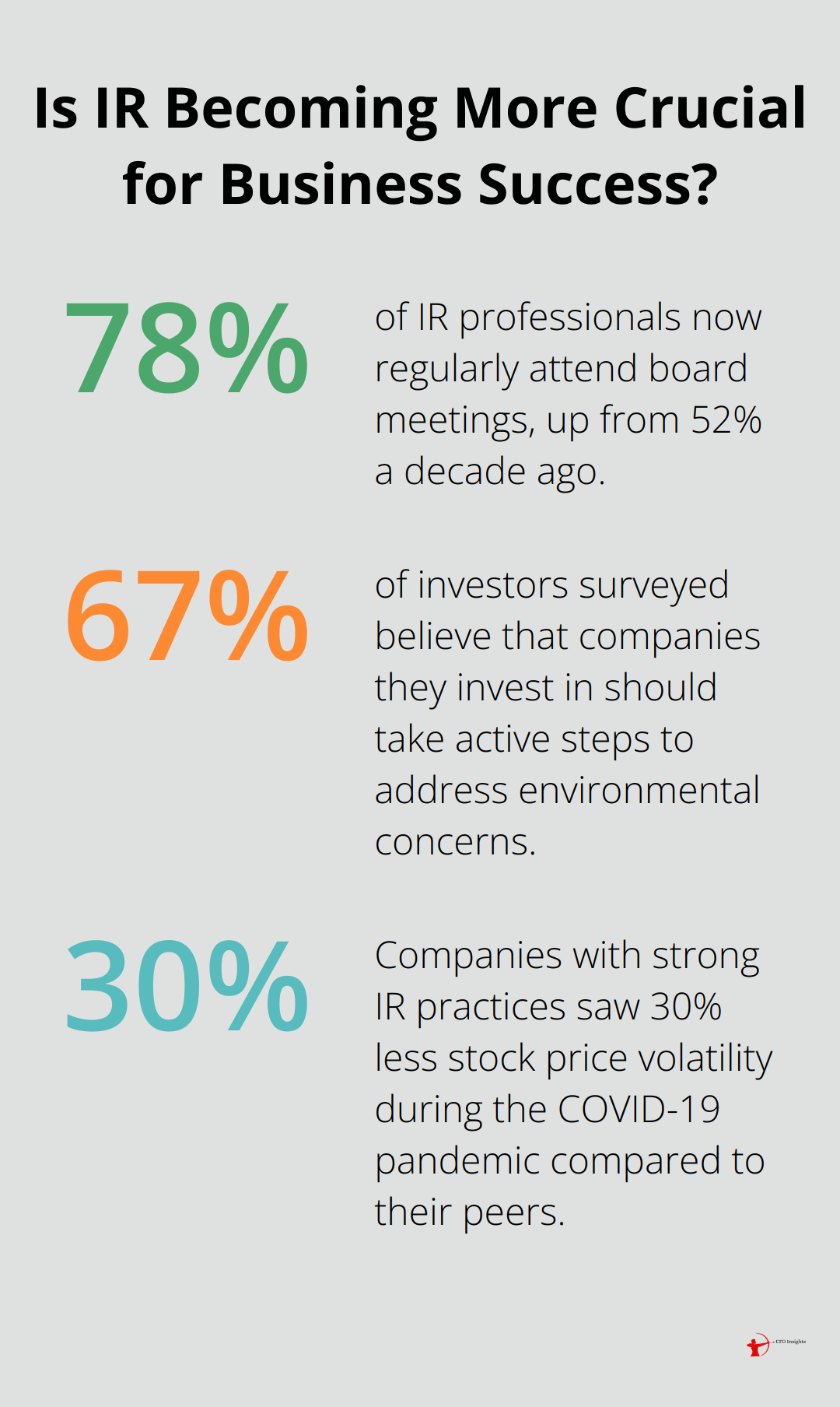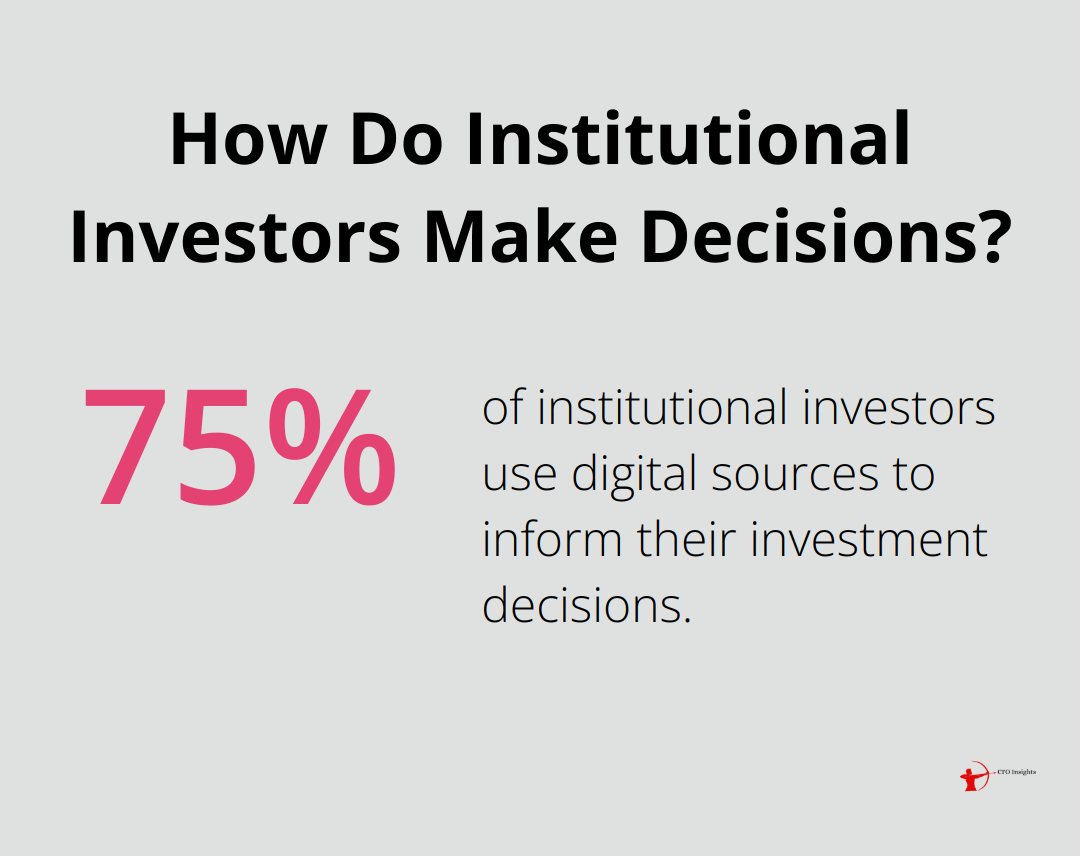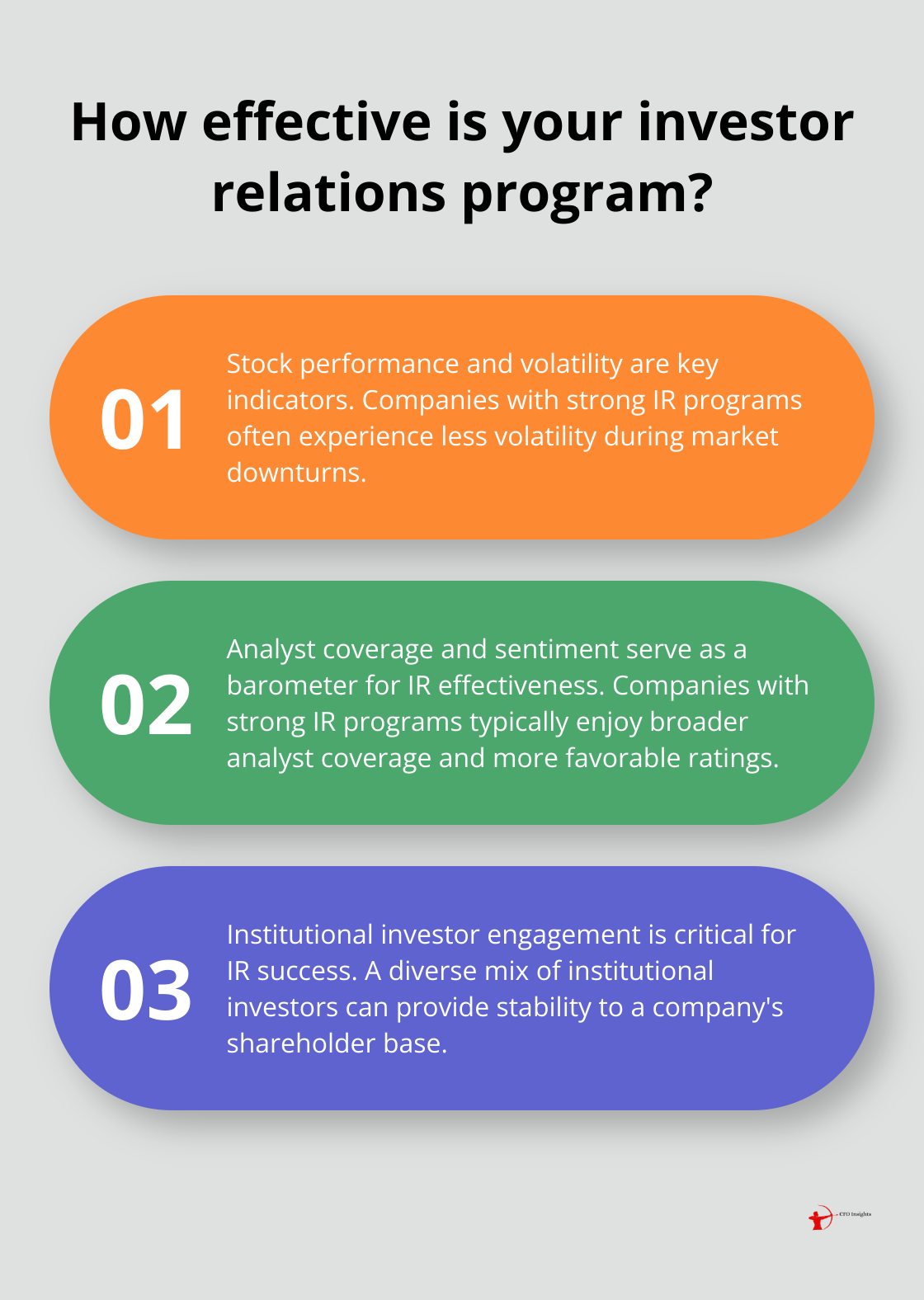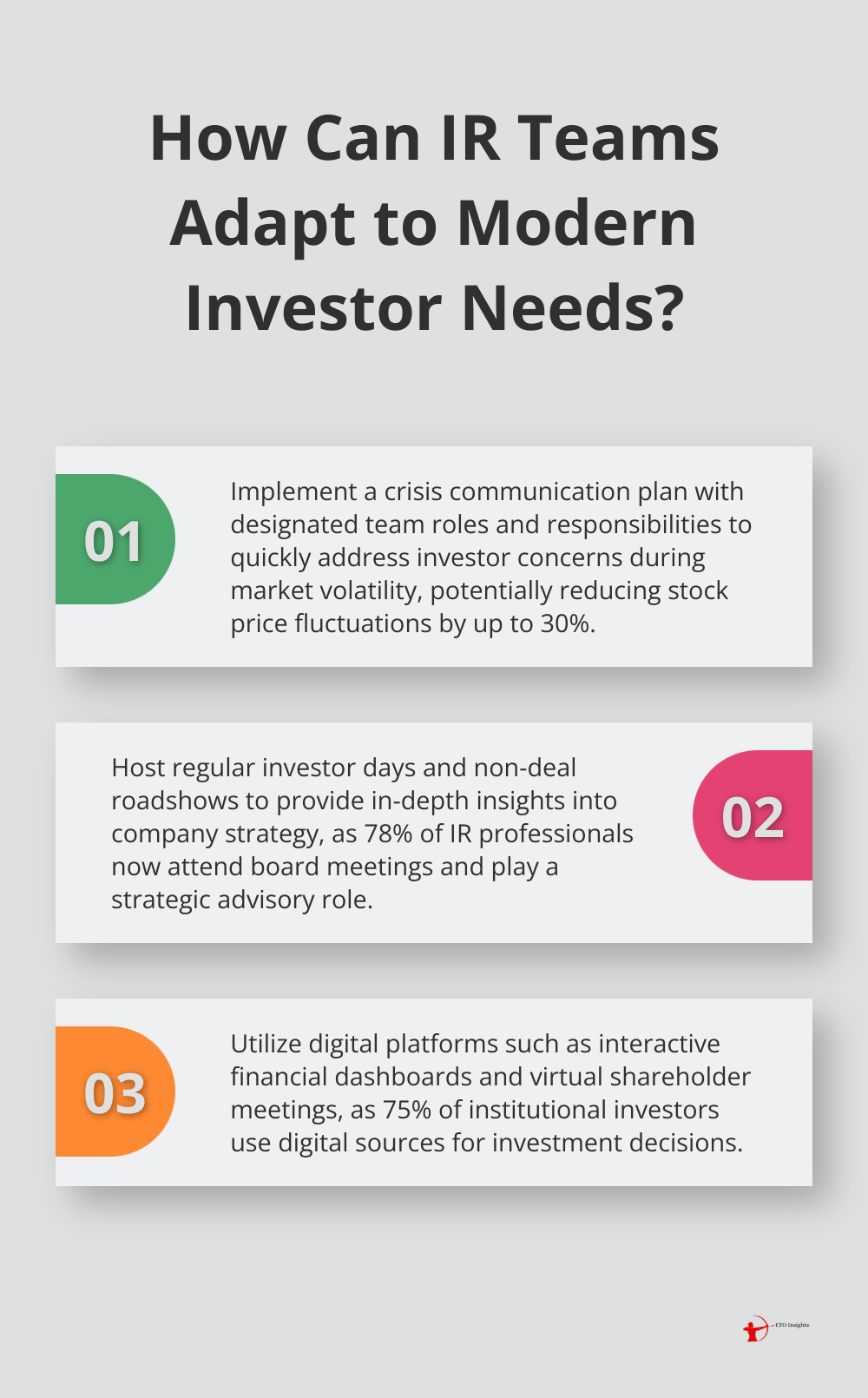Investor relations has evolved from a simple communication function to a strategic cornerstone of modern business. At CFO Insights, we’ve observed how effective IR strategies can significantly impact a company’s market performance and stakeholder trust.
In today’s volatile economic landscape, the role of investor relations professionals has never been more critical. This post explores why stellar investor relations matter more than ever and how companies can leverage them for success.
How Investor Relations Has Transformed
Strategic Advisors in the Boardroom
The landscape of investor relations has undergone a seismic shift in recent years. IR professionals no longer simply disseminate information; they now serve as strategic advisors to C-suite executives. This evolution reflects the increasing complexity of financial markets and the growing demands of stakeholders.

Today’s IR professionals provide valuable insights that inform corporate strategy. They analyze market trends, interpret investor sentiment, and offer recommendations that shape company decisions. A study by the National Investor Relations Institute (NIRI) found that 78% of IR professionals now regularly attend board meetings, up from just 52% a decade ago.
Technology’s Impact on Investor Engagement
The digital revolution has transformed how companies interact with their investors. Social media platforms, virtual shareholder meetings, and interactive financial dashboards have become essential tools in the IR toolkit. A report revealed that 67% of investors surveyed believe that companies they invest in should take active steps to address environmental concerns, highlighting the importance of ESG considerations in investor relations.
Navigating Market Volatility
In times of economic uncertainty, the role of IR becomes even more important. During the COVID-19 pandemic, companies with strong IR practices saw 30% less stock price volatility compared to their peers, according to a study by FTI Consulting. This underscores the importance of clear, consistent communication during turbulent periods.
IR professionals must now excel at crisis management, quickly addressing investor concerns and maintaining confidence in the company’s long-term strategy. This requires a deep understanding of the business, strong relationships with key stakeholders, and the ability to craft compelling narratives that resonate with diverse audiences.
The Future of Investor Relations
As we look ahead, the IR function will continue to evolve, driven by technological advancements and changing investor expectations. Companies that recognize the strategic value of stellar investor relations will position themselves to weather market storms and capitalize on opportunities for growth.
The next section will explore the key components of effective investor relations, providing insights into how companies can build and maintain strong relationships with their stakeholders.
Building Trust Through Effective Investor Relations
Transparency in Financial Reporting
Transparency forms the foundation of effective investor relations (IR). Companies that provide clear, consistent, and timely financial reports build credibility with investors. Financial reporting transparency significantly impacts investor decisions. It boosts confidence, reduces information gaps, lowers capital costs, and enhances stock performance.

To enhance transparency, companies should:
- Provide regular updates on key performance indicators (KPIs)
- Offer detailed explanations of financial results (including both positive and negative factors)
- Use plain language to explain complex financial concepts
- Maintain consistency in reporting formats to facilitate year-over-year comparisons
Proactive Stakeholder Engagement
Proactive stakeholder engagement extends beyond quarterly earnings calls. It involves creating ongoing dialogues with investors, analysts, and other key stakeholders. About two-thirds of investors trust management boards to make decisions for the long term.
Effective engagement strategies include:
- Host investor days to provide in-depth insights into company strategy and operations
- Conduct non-deal roadshows to meet with current and potential investors
- Offer one-on-one meetings with key stakeholders to address specific concerns or questions
- Provide access to senior management through Q&A sessions or small group meetings
Crisis Management and Reputation Maintenance
In today’s fast-paced information environment, crisis management plays a critical role in IR. Companies that respond quickly and transparently to challenges position themselves better to maintain stakeholder trust. The last two decades have seen a number of events driving major value losses in individual companies and collectively in the global economy.
Key crisis management strategies include:
- Develop a crisis communication plan before issues arise
- Designate a crisis response team with clear roles and responsibilities
- Provide timely and accurate information to stakeholders during crises
- Demonstrate accountability and outline concrete steps to address issues
Digital Platforms for Enhanced Communication
Digital platforms have revolutionized IR, offering new ways to reach and engage with stakeholders. A report by Nasdaq revealed that 75% of institutional investors use digital sources to inform their investment decisions.
Effective digital IR strategies include:
- Maintain an up-to-date IR website with easily accessible financial information
- Utilize social media platforms to share company news and updates
- Offer virtual shareholder meetings and webcasts to increase accessibility
- Implement interactive data visualization tools to help stakeholders understand financial information
These strategies help companies build strong, trust-based relationships with their stakeholders. As the IR landscape continues to evolve, those who prioritize transparency, proactive engagement, and effective communication will position themselves best in an increasingly complex financial environment. The next section will explore how to measure the impact of these investor relations strategies on a company’s performance and stakeholder perception.
How to Measure Investor Relations Success
Stock Performance and Volatility
One of the most visible indicators of IR effectiveness is stock price performance and stability. Companies with strong IR programs often experience less volatility during market downturns. A study investigated the impact of firm-specific investor sentiment on stock price crash risk.

To track this metric, companies should monitor their stock’s beta (a measure of volatility relative to the overall market) and compare it to industry peers. Additionally, tracking the stock’s performance during earnings announcements can provide insights into how well the company manages investor expectations.
Analyst Coverage and Sentiment
The quantity and quality of analyst coverage can serve as a barometer for IR effectiveness. Companies with strong IR programs typically enjoy broader analyst coverage and more favorable ratings. Direct contacts with investors increase management credibility and thus have a greater impact on the success of the IR strategy.
To improve analyst relations, companies should:
- Host regular analyst days to provide in-depth insights into company strategy
- Provide clear, consistent guidance on key performance indicators
- Ensure prompt and thorough responses to analyst inquiries
Companies should track the number of analysts covering their company, the frequency of their reports, and the overall sentiment of their recommendations.
Institutional Investor Engagement
The ability to attract and retain institutional investors is a critical measure of IR success. Institutional investors often have longer investment horizons and can provide stability to a company’s shareholder base. A recent study found that for foreign firms, institutional investors filing a 13F with the SEC represent only a minor portion of the total institutional ownership.
To gauge institutional investor engagement, companies should:
- Monitor changes in institutional ownership over time
- Track attendance and participation in investor meetings and conferences
- Analyze feedback from investor perception studies
Companies should try to create a diverse mix of institutional investors (including both growth and value-oriented funds) to create a stable shareholder base.
Digital Engagement Metrics
In today’s digital age, online engagement has become an important measure of IR success. Companies should track metrics such as:
- Website traffic to the investor relations section
- Downloads of annual reports and other financial documents
- Engagement rates on social media posts related to financial news
- Attendance and participation in virtual investor events
These digital metrics can provide valuable insights into the reach and effectiveness of a company’s IR efforts in the online space.
Shareholder Composition and Turnover
The composition of a company’s shareholder base and its turnover rate can indicate the effectiveness of IR strategies. A stable, diverse shareholder base with low turnover often suggests strong IR practices. Companies should monitor:
- The ratio of retail to institutional investors
- Geographic distribution of shareholders
- Average holding periods for major investors
- Shareholder turnover rates compared to industry averages
These metrics can help companies understand how well their IR efforts resonate with different types of investors and identify areas for improvement in their shareholder engagement strategies.
Final Thoughts
Investor relations has transformed into a strategic function that impacts company success. Effective IR encompasses proactive stakeholder engagement, crisis management, and digital communication. Companies must measure and demonstrate IR impact through stock performance, analyst coverage, and institutional investor engagement.

ESG considerations, AI, and personalized communication will shape the future of investor relations. Companies that prioritize robust IR strategies position themselves for long-term success and resilience in volatile markets. Transparent communication and strong stakeholder relationships are essential for thriving in today’s competitive landscape.
CFO Insights offers fractional CFO services to help organizations optimize their finance functions, including investor relations strategies. Our experienced professionals equip companies to navigate modern IR complexities and capitalize on growth opportunities. As the business world evolves, companies must adapt their approach to investor relations to build trust and credibility.




